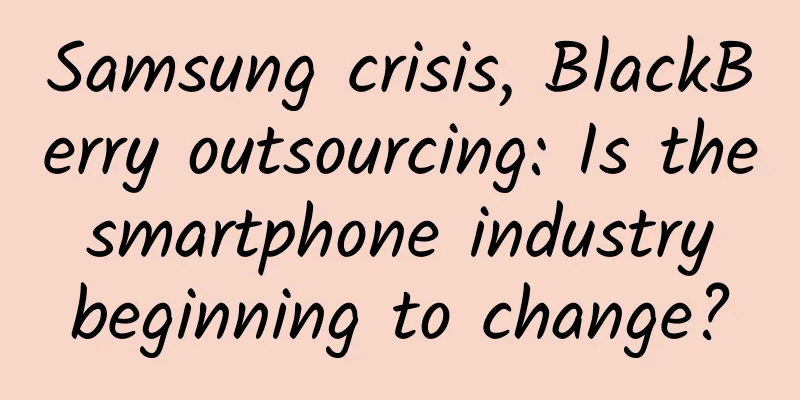Who is eating up the world?

|
Marc Andreessen once famously said, "Software is eating the world." This statement is now well-known in the IT industry. John Vrionis, a fellow venture capitalist, went a step further and asserted, "Open source software is eating the world." So why did he say this? Is John just making a big fuss? Or is there a basis for his statement? Our venture firm has invested heavily in open source software (OSS) companies over the past decade. Recently, we have seen more and more entrepreneurs lobbying investors for investment in their open source projects, which shows that the competition between them will become more and more intense. We recently compiled a batch of data to try to analyze the recent acceleration of people's interest and investment in the open source software industry, and the results surprised us. It's clear that open source software has become increasingly popular. Nearly 10 times as much money has been invested in open source software companies in the past five years as in the five years before that. And it's not just VCs and entrepreneurs that are embracing OSS; companies of all sizes and across all industries are adopting open source software at record levels. This year's annual Open Source Software Landscape Survey, which surveyed more than 1,300 companies, found that 78% of them have open source software projects running internally; 64% of respondents said their organizations participate in public open source projects, a 50 percent increase from 2014. This rate of growth begs the question, "Why?" Historical ReviewFor the past 25 years, almost all enterprise software has been sold in a "top-down" manner. Expensive sales representatives fly around the world in nice clothes, drink and chat with the top executives of major target customer companies, and sell them our special software. If the sales representative is successful, the CIO of these target companies will start to promote these software in their organizations. Ten years ago, a group of innovative companies began to emerge with disruptive products and disruptive sales models to match their products. Companies like SolarWinds, AppDynamics, Splunk, and New Relic began to offer "shareware." Users could freely download the installation package from the website and install it, which could bring value to the company's senior management and IT staff almost immediately. These companies were significantly different, and they no longer had to pay high fees to sales representatives before the product was adopted. Shareware allowed the target company to freely try the software internally, and then pay to purchase the full functionality of the software when they felt it was really worth adopting. This was more efficient (and cheaper) than the previous proprietary sales method that required a large number of sales representatives to preach. Open source software is a further revolution in this direction. A destructive force“Developers, developers, developers…” Remember when Steve Ballmer screamed hysterically on stage? He was right then, but it’s even more true today. Over the past two decades, the power within an organization to decide whether to buy software has completely shifted. The following chart represents a shift that I have repeatedly highlighted at many entrepreneur conferences. It describes how IT departments in the corporate world are changing, and explains how the best startups are responding to this change by shifting product strategy and improving sales plans. Although the CIOs and vice presidents of IT departments of these companies still believe that the decision on which software the company adopts is in their hands, in fact, the developers under these departments are the keys to the kingdom. Regardless of the type of organization, there is a strong pressure to make software development better, faster, and cheaper. Developers are required to develop at lightning speed and to develop products that can be expanded to the maximum extent. As developers in the IT department seek solutions to new challenges and seek advice from their peers, open source software will be introduced to the entire IT organization environment. Before the vice president and other senior executives can come to their senses, these software will soon be rolled out throughout the organization. This makes open source software a popular business model. *** Startup Sells Bibles to New BelieversEvangelizing a new faith is a difficult task and, more importantly, very expensive. Selling proprietary software is very similar. On the other hand, selling Bibles to new Christians is very easy. OSS is very similar. Salespeople can contact customers only when they are comfortable and trust the software they are trying, and they often only need to interact with customers via phone and email. This has positive implications for the long-term development of the business because it greatly improves operational efficiency and gives them more leverage in this sales model. The power of open sourceAs can be seen above, OSS not only benefits from the trend change of developers having more decision-making power in IT departments, but also has more efficient marketing efficiency. In addition, OSS has many other unique advantages. For example, OSS can get product/pilot fit with almost zero investment. What does it mean? As I said before, only those who are in pain will buy from startups that can solve their pain points. One of the first problems that startup founders need to solve in the early stage is to segment the market and find out where they need to land. Many startups fail because they cannot find this landing point. A company that develops proprietary software needs to keep guessing to find such a segmented market. Founders must guess which group of people are the high-quality users of their products. They need to spend a lot of energy to interview different people to find out which people are suffering from these pain points and are willing to take the risk to buy products from an unknown startup. These companies can sometimes successfully find these users, but more often, they will return empty-handed. The customer discovery process of OSS is completely reversed. Open source software is put out there for anyone to use. Once someone is interested in the software, the company that developed the software can immediately get feedback signals. Founders benefit from this real feedback data, allowing them to correctly adjust the focus of engineers and allocate marketing resources. This is very useful and important. Data, some data that is not blindly guessed, allows a company to make the best deployment of limited resources. Open source software is also an adaptation to a developer/user culture. Modern developers do not want their software to be sold to users by fancy-dressed sales representatives. And today's users are more inclined to try before buying. They need more flexibility and speed. They want to see other buyers' evaluation of the software. Because anyone can use and evaluate open source software, it is more flexible than proprietary software. And as a wide range of active communities are established around popular open source projects, the credit of the software can be reflected immediately. Compared with proprietary software controlled by a single entity, the code quality and code stability of open source software are improved faster. Is it worthy of venture capital’s attention?Many venture capital firms believe that investing in OSS companies will not bring huge profits because they think the OSS model will make these companies' monetization capabilities very poor. Just think about it, why would anyone pay for a free open source software? At the same time, they also point to the fact that open source project companies rarely go public as evidence. Here’s an important thing to understand: not all OSS companies are created equal. Any good business will eventually demonstrate operating leverage. This is demonstrated when revenue grows faster than the cost of capital. Companies that simply provide OSS project support services have no operating leverage. They increase their services at a 1:1 ratio with the number of new employees. They are more of a “people business” with thin gross and operating margins – and valuations to match. The OSS companies that will become the backbone of the IT industry will be those that have a successful sales and marketing program, that can allocate resources effectively, and that have a product or business strategy that can provide specialized enhancements. They will find that customers are very willing to pay for enterprise-level features, perhaps security, management, or integration enhancements with support services. At the same time, these companies will also realize that making these features proprietary will not weaken the community's support for the project, such as the performance of the project. Wait and see We will soon see a number of successful OSS companies going public. The direction of purchasing software within the enterprise has changed, and developers clearly have more decision-making power. The best entrepreneurs have thought about how to maximize the advantages of an OSS company, including finding product/market fit, leveraging community contributions, and building a more efficient sales and market growth engine. I’m not saying that all of the 31 companies listed above that have raised a combined $4 billion in funding over the past five years will be huge successes. Some of them haven’t found a winning formula yet. But some of them are unique, disruptive, and built for the long term, and they will become the backbone of the next generation of enterprise software. Stay tuned! |
<<: There is no entrepreneurial winter in the Sequoia world
>>: Wearable devices will trigger big data in science and technology ethics
Recommend
There are so many information flow advertising channels, how do you choose the platform that suits you?
Feed ads are a form of advertising that is inters...
This kind of meat is really not edible! It is very dangerous! (People in the south should pay special attention)
Snakes give people the impression of being cold a...
Tips for operating a wedding photography video account!
1. What is Video Account? Short content : It is a...
Things about online game advertising | Insights into information flow advertising data
Online game advertising has a special position in...
What to do if the white wall is dirty? Save this method!
On the white wall of the house If you are not car...
How to plan for Kuaishou and seize the traffic that 99% of short video players will miss?
As live streaming and short video promotion are i...
Teacher Peng Xinrong's "Xin Yi Shen Shu" time-space energy prediction online course
Teacher Peng Xinrong's "Xin Yi Shen Shu&...
How to cook dog meat?
Dog meat contains a large amount of protein, and ...
3-step analysis | The user growth system behind Xiaohongshu’s massive content
High-quality product content is inseparable from ...
What surprises will there be when samples from asteroid Bennu return?
At 10:53 a.m. EST on September 24, the Pluto prob...
How do knowledge payment platforms increase user growth? 5 routines!
The middle class’s “knowledge anxiety” has led to...
Lantu Auto: In February 2024, Lantu Auto sales reached 3,182 units, a year-on-year increase of 187%.
Lantu Motors was the first to announce its delive...
Case review | Cold start of a new project, clever use of the community to reach 100,000 users in 10 days
The pyramid was not built in a day, and the secre...
Mozi Academy "Douyin SEO" keyword ranking optimization technology
Training course content: The course starts with w...
Extreme development creates the "strongest brain"? Beware of these "neurological myths"!
“Only 10% of the brain potential of an average pe...








![The beautiful and "useless" Möbius inversion solves a class of physics problems [Part 1]](/upload/images/67f203bccd3cd.webp)
